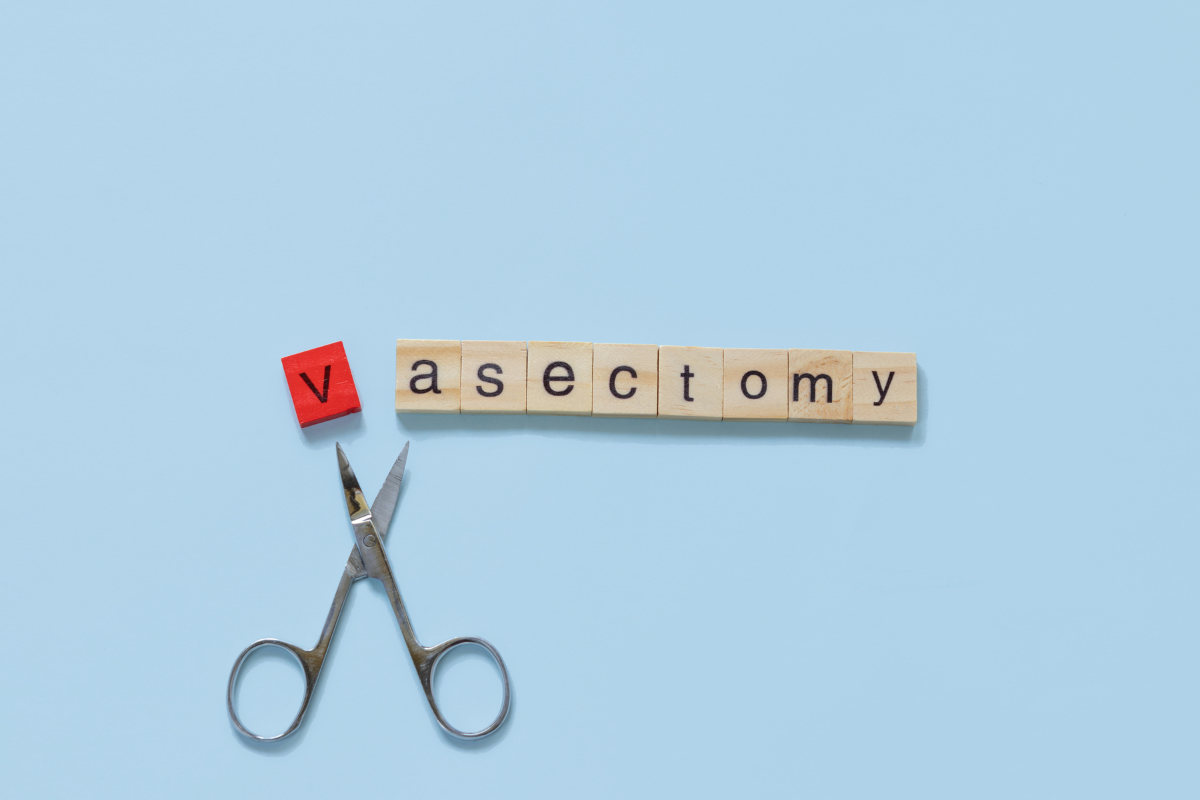At KCUC, our team of men’s health experts routinely performs vasectomies. We use the latest surgical techniques whenever possible to speed up recovery and reduce risks. While this procedure is relatively simple, you will still need a little recovery time. Planning ahead and knowing what to expect is a good idea. If you’re planning a vasectomy, here’s a breakdown of what you can expect before, during, and after the procedure.
Before the Vasectomy
Make sure to choose a date that allows you to rest for 48 hours after the procedure. A great way to accomplish this is to schedule your vasectomy on a Thursday or Friday. This gives you a few days at home to rest and avoid pain or potential bleeding which could happen if you’re on your feet too soon after the vasectomy.
Prior to vasectomy, you will have an office appointment to explain the procedure in detail. You will be given an information packet and a valium prescription for a small dose to be taken the morning of the procedure. You may be asked to view a preoperative video and instructed to shave around the vasectomy site.
On the day of the vasectomy, you may eat and drink normally and take any medications and supplements you normally take except for blood thinners. Do not take any blood thinning medication (ibuprofen, naproxen, vitamin E, fish oil, as well as more specific drugs that are utilized for specific cardiac and vascular diseases) for seven days prior to your vasectomy. You will receive a more complete list of blood thinners in your vasectomy packet.
During the Vasectomy
The procedure only takes about 15-20 minutes. You will want to have someone drive you to and from the appointment. Once in the procedure room, you undress from the waist down, cover up with a sheet, and lie down on the table. A small amount of cleansing solution will be used to prepare the skin in the upper scrotal and genital region.
During a vasectomy, the vas deferens (located on each side of the scrotal sac) is disconnected to prevent the normal flow of sperm from the testicles to the urinary tract. A small amount of numbing medicine will be placed on the skin overlying the tube on each side. Once this medicine is in place, there is very little pain for the remainder of the vasectomy. After the skin is numb, your doctor will make a small incision in the skin overlying the tube and then disconnect it by clipping, cauterizing or tying it off to complete the vasectomy. The same steps are repeated on the opposite side to complete the procedure.
At the conclusion, a small stitch is usually placed to close the skin incisions. This stitch will usually dissolve in one to three weeks. Your doctor will let you know if a follow up appointment is required. It’s a good idea to bring a supportive pair of underwear with you to wear immediately after the procedure and for at least one week following.
After the Vasectomy
It is strongly recommended to go home and rest. Lying down or reclining is preferred. Your risk for complication is highest in the first 48 hours after the procedure while your body undergoes the initial phases of healing. This is when inflammation and swelling is most prominent. Refrain from being on your feet for any extended period. You do not have to be on strict bed rest, however, minimizing the time that you are on your feet will decrease the amount of swelling in the scrotal and testicular region.
On the day after your vasectomy, you may shower in the morning, but we ask you to spend most of the day resting with ice packs applied to the scrotum. For the first 48 hours, we suggest using an ice pack on the region to help reduce the amount of inflammation and swelling. You may either continuously keep the ice pack on outside the supportive underwear or rotate 10 minutes on and 30 minutes off in order to keep the tissue cool.
On the third day after vasectomy you may resume most non-strenuous activities. It’s not unusual during the first week to occasionally get discomfort when you are on your feet for extended periods of time or engaging in more moderate to strenuous activities. This is normal and will usually respond to rest, supportive underwear and the use of ibuprofen or other anti-inflammatory medications. You may resume sexual function and more strenuous activity like jogging, climbing and weight-lifting one week after your vasectomy.
When Will Sterility Be Achieved?
Until all sperm exit the reproductive and urinary tracts, you are still fertile. It can take several weeks to completely clear. You will be asked to bring back two semen specimens 8-16 weeks after the vasectomy. When the specimens test negative for sperm, you will be considered sterile. Until that occurs you will have to use other means of birth control to prevent pregnancy.
Once semen has been checked and is negative for sperm on two semen analyses, there is less than 1/2000 chance that the vas deferens can spontaneously reconnect, so the vasectomy is considered permanent. A vasectomy can only be reversed through surgery. The sooner reversal is done after a vasectomy the better the results are. Overall pregnancy rates are about 60% with a reversal.
Contact us today and choose the Kansas or Missouri KCUC location closest to you for all of your Kansas City vasectomy appointment needs and questions.

